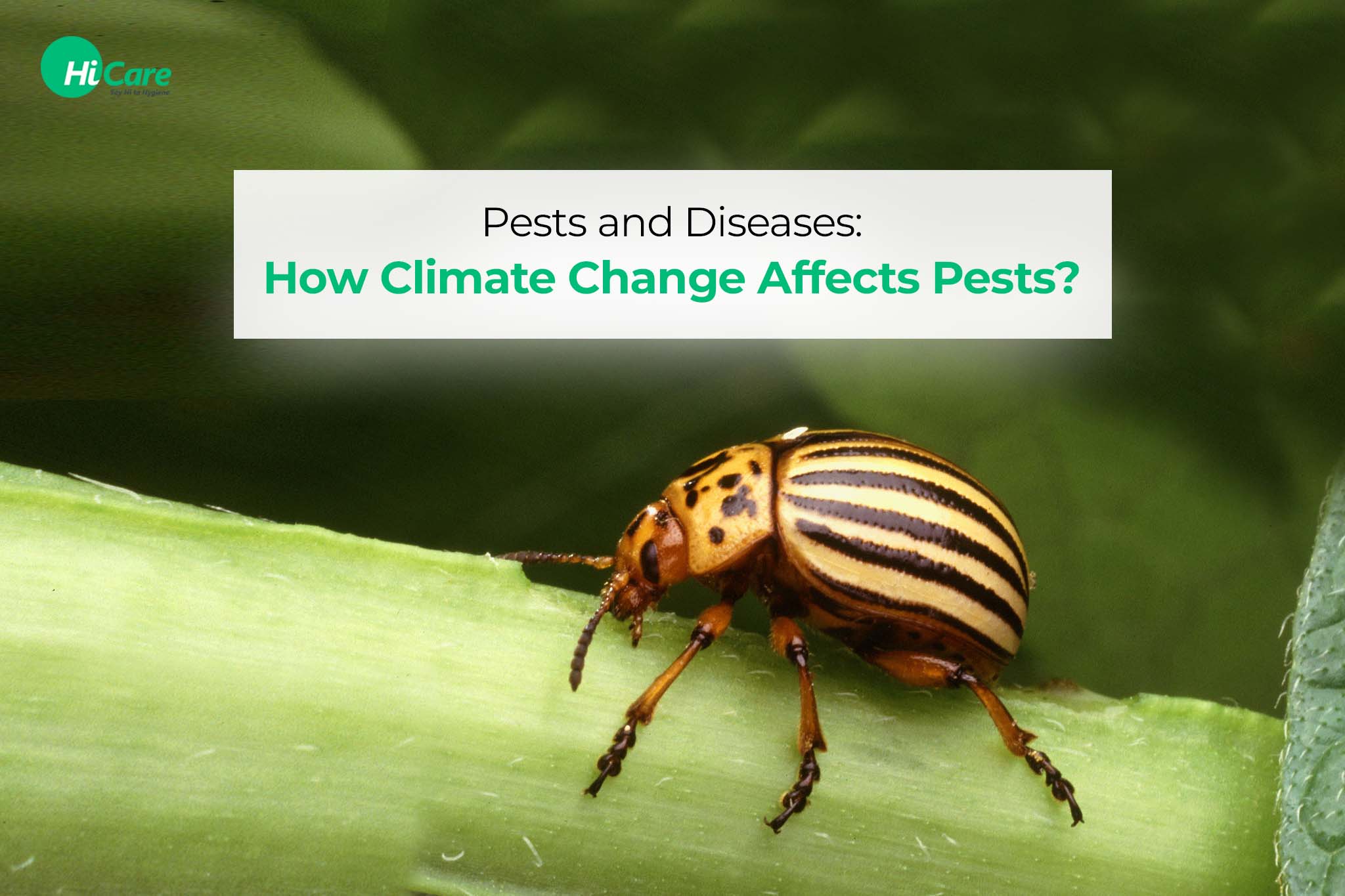Increase in carbon dioxide leads to an increase in pests and diseases. Elevated carbon dioxide levels increase the levels of simple sugars in leaves and lower their nitrogen content.
Hence insects will consume more greenery (leaves) to meet their metabolic requirements for nitrogen. Higher temperatures from global warming (due to more carbon dioxide) means many, many more pests will survive the mild winter season.
We can feel the direct effects of climate change: witness pest proliferation. Higher temperatures and carbon dioxide favor the growth of pathogens and many fungi.
Pests and diseases will spread towards both poles (north and south) as temperate zones become more like the tropics. Warmer temperatures favor insect carriers of many disease pathogens and also lower the effectiveness of some pesticides.
Impact of Climate Change on Pests
- Climate change poses a threat to the control of pest and disease invasions. “Pests and diseases” include insects, plant diseases and invasive weeds.
- Today pests are invading previously uninhabitable parts of the earth due to climate change factors like ever-increasing average temperatures, warmer winter minimum temperatures, changes in precipitation patterns (snow or rainfall) and water-shortages (drying rivers, lakes, ponds, and drought) and monsoon failure or flooding in different parts of the sub-continent.
- In their native habitats, natural predators and other ecosystem processes keep potential pest species under control. Once introduced to a different area, the environmental variables may not be suitable to control their population.
- Among the effects of climate change, the way in which these pest invasions are aided by widening the “invasion niche” or set of environmental conditions under which pests can successfully invade newer areas.
- Due to climate change, an insect vector (MPB) often spreads crop diseases. Many invasive weed species are growing rapidly and spreading in many new geographic areas due to climate change.
Effects of Mild Winters on Pests
- Milder winters have been shown to increase the survival of many frost-sensitive insect pests. Increasing temperatures contribute to a poleward migration or expansion of the ranges of many insects, organisms and micro-organisms: as temperate zones become more tropical and even experience occasional “heat waves” that contribute to the spread of bacteria, viruses and insects.
- Increasing temperatures allow for higher rates of growth, reproduction, survival, and dispersal of most insect herbivores and insect vectors. Studies on aphids, moths, butterflies, and beetles show that they have found new habitats, outside of their natural environments.
- Mosquitoes, cockroaches, and many other insects-pests find it easy to proliferate in these newly created “tropic-like” environmental conditions. This means that climate change is helping virulent insects and other pests to spread far and wide.
- As these pests increase and multiply, so does the spread of viruses, bacteria, and other disease-causing pathogens. Climate change is not just of concern to governments and farmers (even though flooding and drought, as well as raging forest fires, result from it). It is the concern of each and every human being because climate change appears to help insects and other pests win the war against the human race.
HiCare: Best Pest Control Company
Hicare is a highly regarded pest control service company with a strong reputation for providing effective and reliable solutions for a wide range of pest related issues. We specialize in controlling common household pests such as cockroaches, termites, mosquitoes, bed bugs, rodents and others. With a team of highly trained professionals and a commitment to using only the latest and most advanced pest control technologies Hicare is known for its superior quality services and excellent customer support. Our services are available in various cities across India making us a go to choice for those seeking reliable and efficient pest control solutions. Call us at 08828333888 or visit HiCare for more information.





